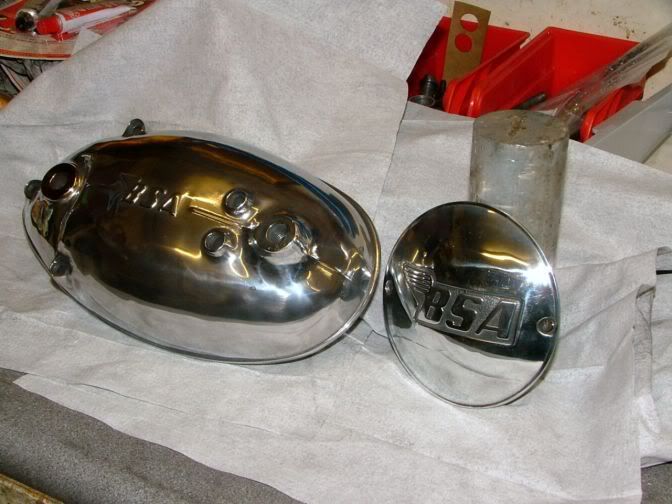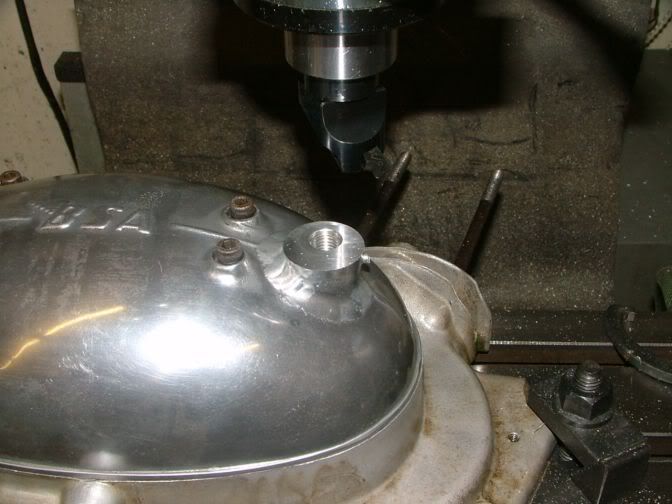Here's my experience
I've done a fair share of different alum. The best finish will always be billet style alum. And degrades when cast, magnesium etc... So metal type is important in achieving a true mirror finish.
N,
You will notice that the picture I showed above is a cast material, and is well known for not being much good. These were from my own era, and know first hand how bad they were, you only had to tap the castings and spider web cracks appeared, in fact, on the larger piece, I had to grind out and repair such a fault before reshaping and polishing.
This shows the part having a rev counter boss being fitted. It is a shame that the spiders web can't be seen correctly, it is just to the left of the bright hi-light.
Dressing back to get the shaping correct.
I gave up on hand finishing with Autosol or any other tube or liquid based aluminium polishes because they just couldn't get the depth of shine that I wanted.
When the new plastic polishing wheels and soaps came along, it answered all my prayers, I could then get a hard chrome like finish on ANY non ferrous materials, including brasses and all it's ranges and all plastics. A thing that just can't be achieved by hand polishing.
People say that you get rounded over edges with buffing wheel polishers, but that only happens when you don't know what you are doing. In fact, I can sharpen up edges with the correct wheels and compounds.
Marvelous what you can do when it is done correctly.
BTW, I was shown all the tricks when watching the stainless polishers in R-R for a couple of years, doing their thing, they could work wonders with a scruffy old bit of welded up SS, which most of it started life as.
John







